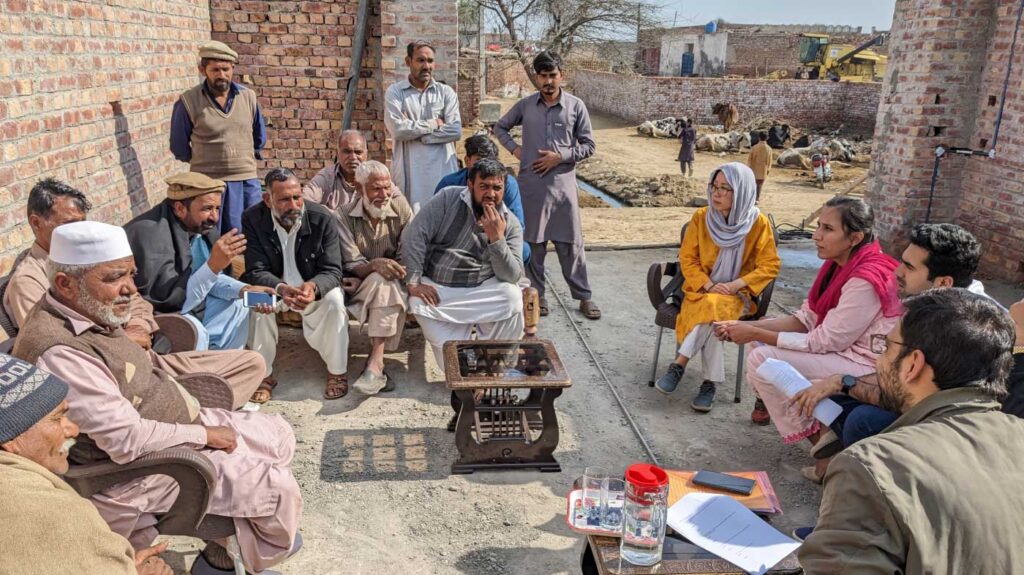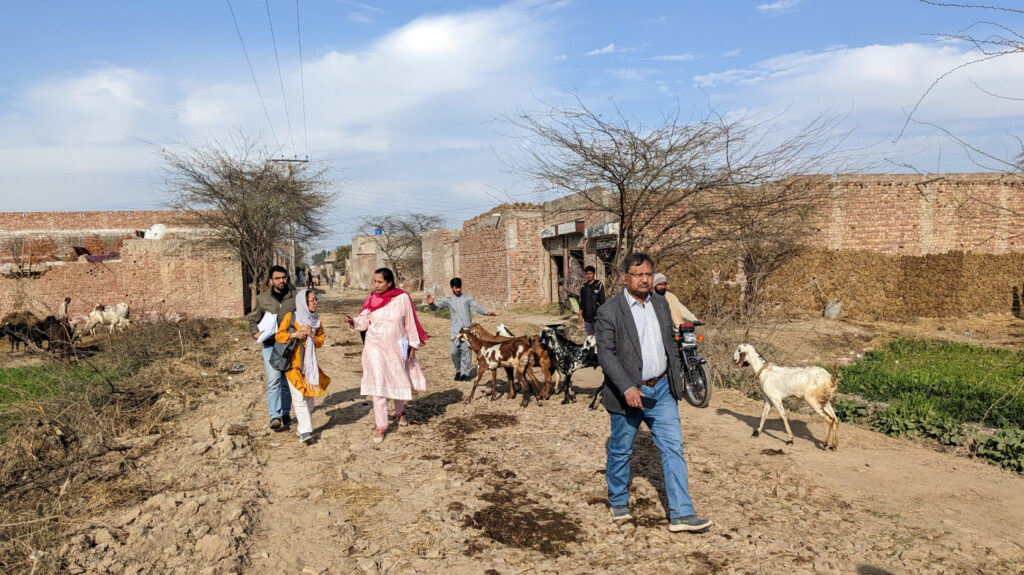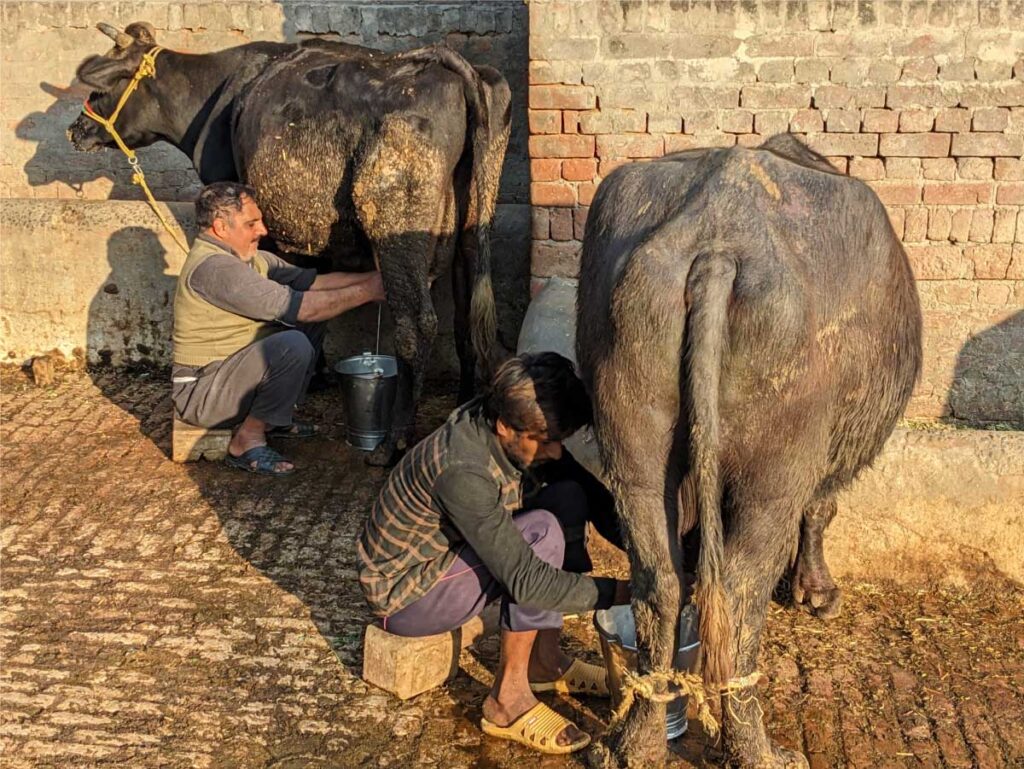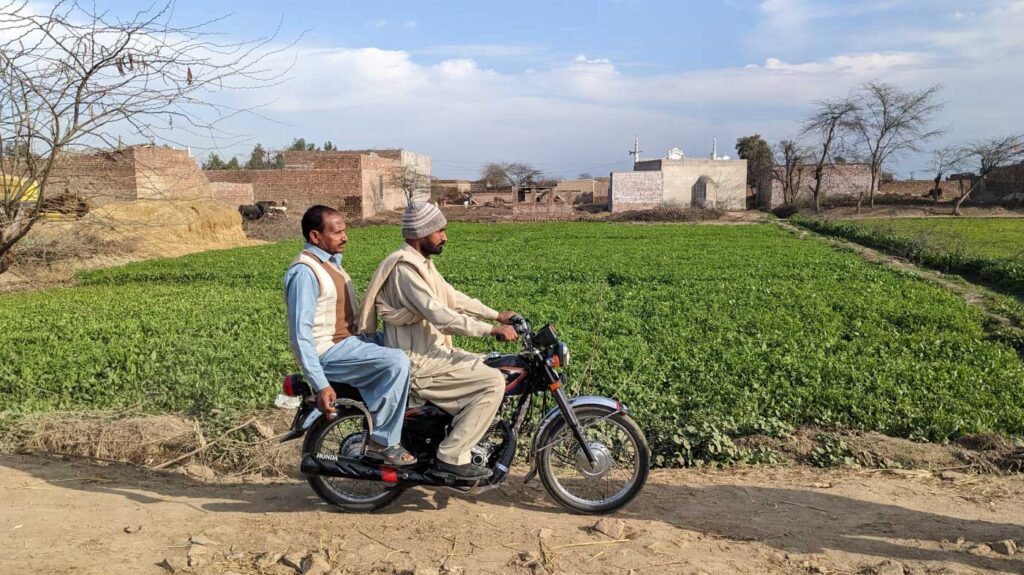Punjab means “five rivers”, and those five rivers are the reason that the Punjab region in Pakistan is the country’s bread basket. Tomoko and I were in Punjab last week visiting the PxD Pakistan country team. As many of you will know, PxD in Pakistan is housed within a local economics research institute, CERP, a partnership that has enabled us to be more effective and flexible.

This week much of our attention has been on smallholder rice production. The staple food in Pakistan is of course wheat (for roti), but rice is a major crop for both domestic consumption and export. (We were in town at the same time as the IMF delegation, negotiating a package of macroeconomic reforms to stabilise the economy, so those export earnings are important right now).
Punjab is famous for its basmati rice, a variety much prized for its aroma, fluffiness and grain length. It is very popular in traditional dishes like biryani and pulau. We visited Kala Shah Kaku Rice Research Institute, established in 1926, where basmati rice varieties have been developed since the 1930s. Farmers in Pakistan typically grow wheat in the Rabi season and then many grow rice in the Kharif season, especially in the basmati belt in Punjab. The yield of basmati rice is around half as much per hectare as hybrid rice varieties, but it sells for around twice the price, so generating similar revenues and broadly similar net income per hectare. (An exciting development on the horizon is the prospect of hybrid basmati rice that may have a much higher yield while retaining much of the quality for which basmati rice is famous.)
Many of the people we met were keen to stress that Pakistan, rather than India, is the home of basmati rice. I’d be very glad if the rivalry between these two great nations were confined to arguing about the origin of basmati rice and, far more importantly, their relative prowess in cricket.
Pakistan’s farmers produce on average around 4 tonnes of rice per hectare, about the same as in India. In China, the yield is 7 tonnes per hectare and in Australia 10 tonnes per hectare. The yield gap (that is, the gap between what farmers produce and what they could produce with the land and other inputs available to them) is estimated to be about 50% – about 3.5 tonnes per hectare – for basmati rice, and closer to 60% – 6 tonnes per hectare – for the higher yield but lower price varieties. In other words, farmers could, in principle, at least double their yields. So what is holding them back?

You would expect farmers to be more interested in increasing their profit than their yield, so one possible explanation – in theory – could be that the additional inputs are too costly, and the value of the extra output does not justify the investment. In that case, it would be rational for farmers not to increase their output this way. But that doesn’t seem to be the problem. The additional cost of the recommended inputs, at market prices, is small relative to the price that basmati farmers could get for the roughly extra 3-4 tonnes per hectare that they could be producing. Despite extra input costs, the extra yield on this scale would lead to much higher profits – perhaps multiples of profits now being earned. If you are doing only a little better than breaking even, then moving to a reasonable surplus could mean a transformational increase in net income.
So what is getting in the way? We spent two days in villages outside Lahore talking to farmers, extension agents, and private and public sector experts to try to get a better picture.
My main take-away is that it seems that expensive credit for agricultural inputs and low prices paid by middlemen (called aahrtis) leaves farmers with little surplus. Farmers are unwilling to take on a large, expensive debt which – if the harvest is bad – they may not be able to repay, especially when they know that a big chunk of any profit, if the harvest is good, will go to the middleman. So they stick to limited use of inputs, which gives them lower yields and less debt and thus lower risk. Thus it is the cost of credit, and the associated risk, rather than the cost of the inputs themselves, that stops them from investing more.

I’m conscious that we met farmers close to Lahore, who are relatively well-off, and who are already in contact with extension services. So we should be careful about drawing too many conclusions. Based on these few conversations with an atypical group of farmers, I find it hard to convince myself that there are very many practices that farmers could adopt that they do not already know about. That said, there may be some value to encouraging practices that cost the farmer little or nothing to implement – or which save inputs such as using the right amount of urea – for example by issuing timely reminders. But it looks as if the larger gains would come if we could find a way to reduce the risk of increased investment in inputs, reduce the cost of credit, provide high-resolution weather information, or perhaps improve planning and coordination in the use of scarce machinery or casual labour.
It is harder to notice what is missing than what is in front of you. As you may see from the photos, we did not meet any women farmers. We met a female scientist at the rice institute, but everyone else we spoke to was a man. In every conversation, farmers were routinely and unthinkingly referred to as “he”. Yet we know that women provide a substantial part of labour in agriculture, and are hugely affected by all the decisions that are made. If we want to understand what it would take for farmers to adopt practices that would increase their yield and their incomes, we are likely to learn a lot by talking to women too.

I leave Pakistan optimistic but uncertain. Optimistic because the opportunities are huge for large increases in yield and potentially transformative increases in farmer incomes. The constraints are real, but there may be solutions that have a low marginal cost per farmer and so would be hugely cost-effective at scale. Uncertain because we do not yet have enough information to arrive at robust ideas for higher-impact services that we could design and test.
I want to thank Adeel, and all the team, for giving up so much of their time and energy to host us – including taking us to the old Walled City of Lahore to have dinner overlooking the famous Badshahi Mosque (Mosque of Kings) and the Lahore Fort (Shahi Qila in Urdu), an ancient citadel of the Mughal Empire. I look forward to returning to Pakistan soon and hope to combine my next trip with some tourism in your beautiful country.


Stay Updated with Our Newsletter

Make an Impact Today


